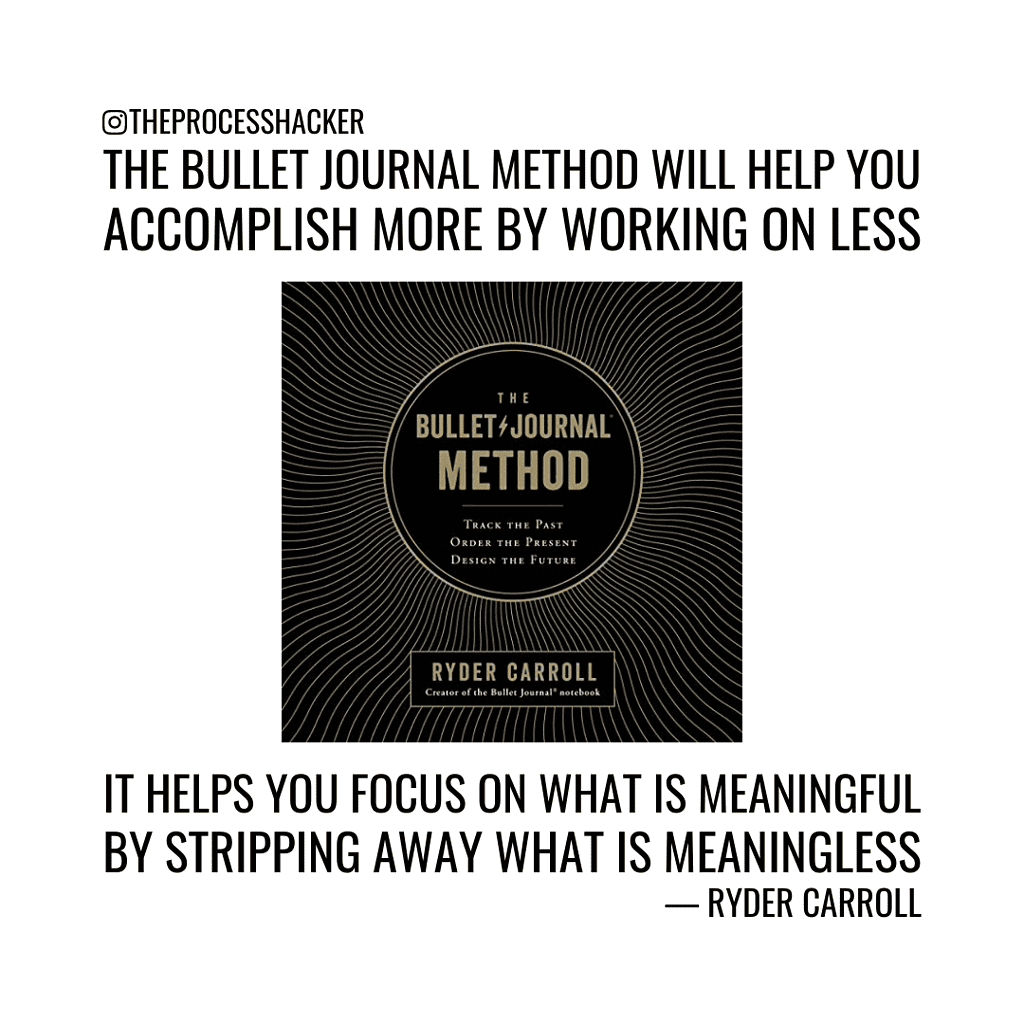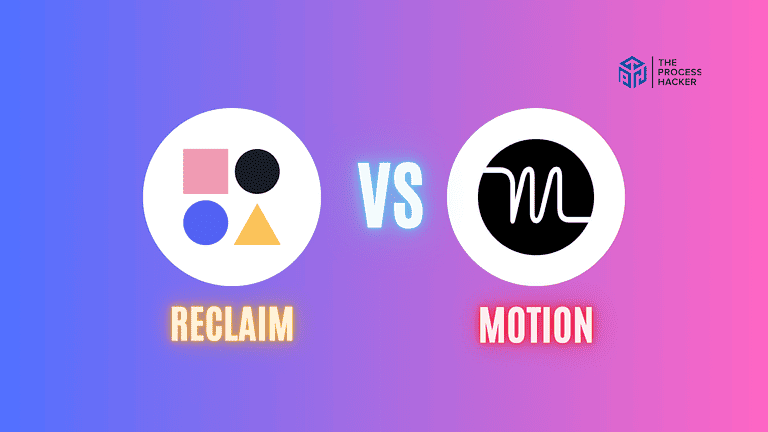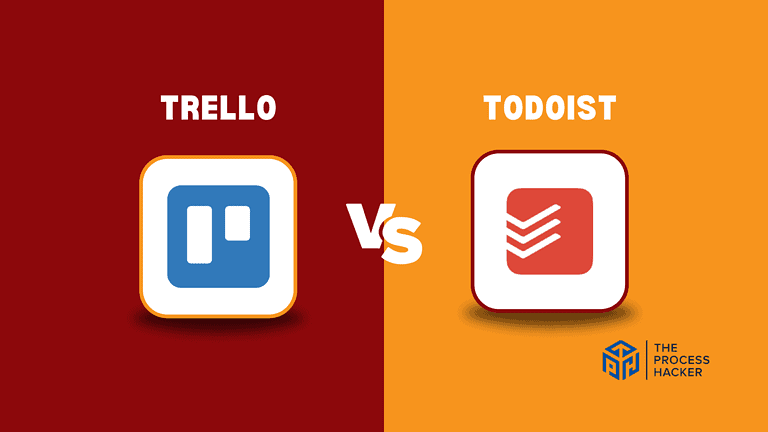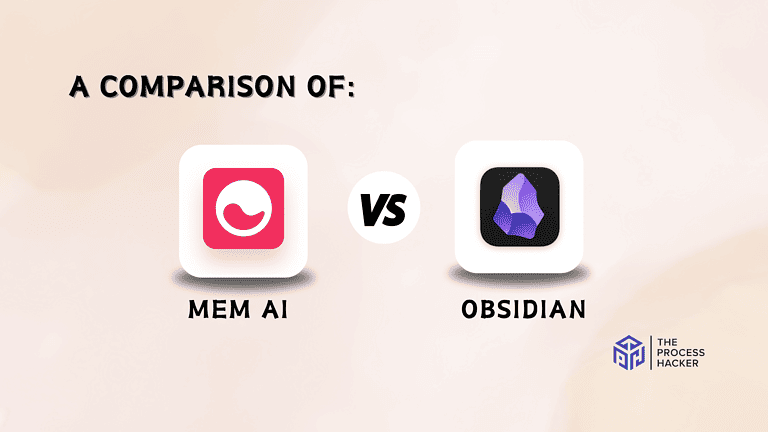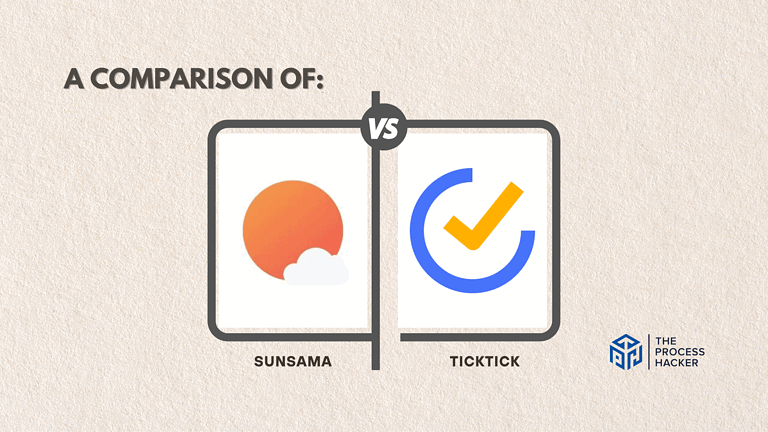The Bullet Journal Method by Ryder Carroll | Book Summary
“The Bullet Journal method will help you accomplish more by working on less. It helps you identify and focus on what is meaningful by stripping away what is meaningless.”
Ryder Carroll, author of The Bullet Journal Method
In his book, The Bullet Journal Method: Track the Past, Order the Present, Design the Future, Ryder Carroll provides a guide to his paper productivity system. Known as the Bullet Journal Method, “it will help you get organized by providing simple tools and techniques that can inject clarity, direction, and focus into your days.”
Writing forces you to pause and synthesize your thoughts into the page. It also helps you reconnect with yourself to determine what matters most to you. Then, you can focus your resources to be most productive to be able to do the following:
- Track the Past: Formulate a clear and extensive record of your thoughts.
- Order the Present: Discover clarity by managing your to-do list more effectively.
- Design the Future: Turn your ideas into purposeful goals with manageable action steps.
The Bullet Journal Method consists of two parts: the system and the practice. The System (Part I and II) shows you how to use the Bullet Journal Method. The Practice (Parts III and IV) help you learn the why behind the practice.
Buy The Bullet Journal Method on Amazon
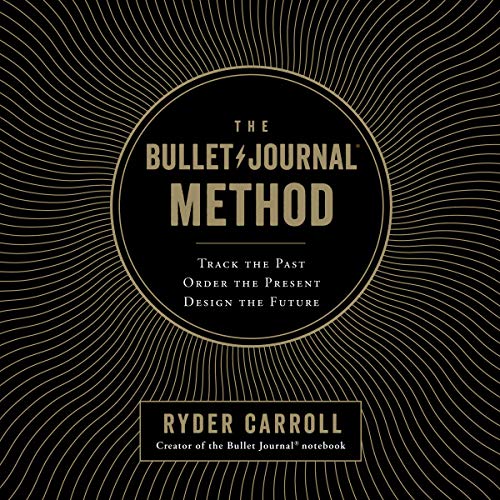
The Bullet Journal Method by Ryder Carroll
Track the Past, Order the Present, and Design the Future
Download the PDF Book Summary for The Bullet Journal Method
Part I – Preparation
This section of the book introduces the Bullet Journal Method to the reader.
The Promise
“The Bullet Journal Mission is to help us become mindful about how we spend our two most valuable resources in life: our time and our energy.” You will get more done in less time by focusing on what is most important to you while removing the rest. The Bullet Journal Method framework is adaptable, forgiving, and practical by integrating the following concepts:
- Productivity – the techniques of getting things done by decluttering your mind, examining opportunities, prioritizing them, and removing distractions
- Mindfulness – the process of becoming aware of where you are, who you are, what you are
- Intentionality – the habit of determining what is essential, understanding the why behind it, and establish a rapid plan for taking action
The Guide
The Bullet Journal Method system simply requires a new notebook, a blank sheet of paper, and a writing utensil.
The Why
Live an intentional life by aligning your actions with your beliefs. Understand what you want, why it matters to you, and create a rapid plan of action to achieve your goals.
Decluttering Your Mind
Many of us are always busy, which simply means that you are overwhelmed. We suffer from decision fatigue: “the more decisions you have to make, the harder it becomes to make them well.” Thus, you should decrease the number of decisions you have to focus on what is meaningful to you.
The Mental Inventory: Provides a picture of how you are using your resources. Take the sheet of paper and divide it into the following three columns to list everything that is in your head:
- Column 1: What are you currently working on?
- Column 2 (Needs): What should be working on?
- Column 3 (Wants): What do you want to be working on?
The Test: Determines what choices are worth making. For each list entry, ask yourself the following two questions:
- Is this meaningful (to you or someone you love)?
- Is this important (in terms of work, finances, health, etc.)?
If you answered yes to something, then keep it. If no, then cross it off. You should be left with your needs and wants.
Notebooks
The Bullet Journal Method forces us to get offline as “our notebook serves as a mental security where we are free to think, reflect, process, and focus. The author can express their creativity, customize their notebook to their needs, and evolve as your life changes.
Handwriting
The notebook forces you to write by hand, which is powerful and more effective for learning, retention, and awareness than typing. It does take longer to write by hand; however, it makes us more strategic, efficient, and deliberate in what words we put on the page.
Part II – The System
In this part of the Bullet Journal Method, we learn about the system to turn your notebook into a robust organizational tool. For each key concept given below, ask yourself if it will help you?
Rapid Logging
Rapid Logging helps us quickly capture, organize, and prioritize our thoughts as living lists of Tasks, Notes, and Events. This practice will help you efficiently capture your life as it happens so that you may begin to study it.
Topics and Pagination
The Bullet Journal Method frames the content into defined topics with these functions:
- Identify and describe content;
- Provide an opportunity to get clarity; or
- Set the agenda.
Intentionally pause before you give your page a topic by asking:
- What will you capture on this page?
- Why is it meaningful to you?
- How will it add value to you?
Write the topic at the top of the page. Lastly, give it a page number to make it easy to find using your index.
Bullets
Bullets capture your thoughts into short, clear, and objective sentences and are categorized into tasks, events, and notes.
Tasks – these are the things that you need to do
- Divided into five different states:
- Tasks (●) – those that you need to take action on
- Completed Tasks (X) – those that you have finished
- Migrated Tasks (>) – those that you have pushed forward into the next Monthly Log or a specific Collection
- Scheduled Tasks (<) – those that you have connected to a date/time in future months and moved back into the Future Log (front of your notebook)
Irrelevant Tasks– those that you have deleted off your list due to changes in your life or circumstances
- Can be further subdivided into Subtasks, which are the multiple steps taken to complete the Master Task
- Have the purpose of making it easy to remember your open tasks and establishing a record of your actions
Events (○) – the experiences that you schedule proactively or log retroactively
- Accurately record the present to make informed decisions in the future
- Schedule events in future months in the Future Log
- Nest note bullets to write down essential or exciting details regarding an experience
Notes (-) – the reference information that may not be urgent or actionable, which include facts, ideas, thoughts, and observations
- Take a step back, review your notes, notice new insights, and capture them
- Record information that is relatable or of genuine interest to you
Signifiers – the symbols used to highlight specific bullets to add context, which includes:
- Priority (*) – those bullets that you are prioritizing as important
- Inspiration (!) – those bullets that you highlight as great ideas, mantras, or insights
Custom Bullets – the bullets that are unique to your situation, such as:
- Delegation (/) – those tasks delegated to someone else to get done
Collections
In the Bullet Journal Method, Collections are the modular blocks that organize and store similar content. They are reusable and interchangeable. Your Stack, or portfolio of Collections, can be personalizable to your needs. There are four core Collections: Daily Log, the Monthly Log, the Future Log, and the Index.
Daily Log – the daily catchall for Rapid Logging your thoughts (Tasks, Events, and Notes)
- Use as much space as that day needs, as it can span from a half-page to several pages
- Create the new entry and add the date during the day of or the night before
Monthly Log – the record for your time, tasks, and mental inventory for the current month
- Set up to spread on facing pages with the Calendar Page (left) and Tasks Page (right)
- Calendar Page – a list of dates that can be used like a traditional calendar or a timeline
- Tasks Page – a record of your ongoing Mental Inventory for the month
Future Log – the record of your Future Tasks and Events that occur in later months
- During Daily Reflection, transfer bullets with a future date to this Log
- Acts like a queue for items to move its Monthly Log during the respective month
The Index – the content guide, which is listed using Collection Topics with their page numbers
- Subcollections – the Collections nested within a Collection for a complex project
- Dedicated Index – an Index page used for tracking a specific subject
- Treading – the system of navigating between related content by connecting the different instances using their page numbers
Set up your Bullet Journal Collections through these steps:
- Index: Use the first four pages and only add things that have content.
- Future Log: Use the next four pages divided into six cells for future months.
- Monthly Log: Use two facing pages (Calendar and Tasks) for the current month.
- Daily Log: Write the page number and today’s date as the Topic; however, do not index.
Migration
In the Bullet Journal Method, Migration is the process of transferring content by rewriting it in another place.
Monthly Migration: Set up a new Monthly Log at the end of the month:
- Remove anything that is not essential or irrelevant.
- Migrate Tasks from the last Monthly Log or Future Log into the new Monthly Log.
- Migrate any additional Tasks into Custom Collections.
- Move Future items that are outside the current month into the Future Log.
Yearly Migration: Start a new notebook at the beginning of every year, and migrate Open tasks from the previous year’s notebook.
Download the PDF Book Summary for The Bullet Journal Method
Part III – The Practice
“The Bullet Journal Method can serve as a bridge between your beliefs and your actions.” The practice shows you how to live a productive, purposeful, and intentional life.
Beginning
You will fail if you don’t start, so give yourself permission to believe that using your notebook is worth the risk. Take notes for the Bullet Journal Method within your notebook and create its own Collection. While reading, Rapid Log your thoughts and ease yourself into the system.
Reflection
Reflection is the habit of checking in with ourselves to examine our progress, priorities, conditions, and mental state. Thus, the Bullet Journal Method has multiple Reflection tools:
- Daily Reflection: Provides you two moments of introspection on your day
- AM (Plan): Identify open Tasks, clarify priorities, and plan accordingly.
- PM (Review): Scan Bullets, update the Daily Log, and appreciate your progress.
- Monthly and Year Reflection: Review each of your items during these Migrations.
You can later use these reflections to build a StoryBrand for brand or business.
Meaning
“If happiness is the result of our actions, then we need to stop asking ourselves how to be happy. Rather, we should be asking ourselves how to be.” As happiness stems from meaning, you should clarify your vision for a meaningful life based on your own experiences.
Goals
Goals define what we want. Setting goals allows us to cultivate our curiosity and take action on them. In the Bullet Journal Method, Ryder Carroll provides several goal-setting tips:
- Create a Goals Collection: Write down your goals in a new Collection in your notebook.
- 5, 4, 3, 2, 1 Exercise: Classify goals for 5 years, 4 months, 3 weeks, 2 days, and 1 hour.
- Prioritize Goals: Identify the most critical goals and add them to the respective Logs.
- Focus on Your Priorities: Focus on these goals to prevent you from getting distracted.
- Breakdown Goals: Deconstruct larger goals into smaller, manageable sprints.
- Brainstorm: Explore the what and why behind your goal and write it in your notebook.
- Reflect on the Goals: After taking action, reflect on the experience and course correct.
To learn more about setting goals and achieving them, check out our blog post on SMART Goals (simple, meaningful, actionable, realistic, and trackable).
Small Steps
We can affect change without overwhelming ourselves through kaizen or sustainable improvement to make significant changes over time. Look for opportunities to take small steps:
- Ask Small Questions: Examine the challenges and issues along the way by asking:
- What do I want to do? Why do I want to do it?
- What worked? What didn’t work? How can I improve next time?
- What small step can I take to get started or move forward?
- Iterate: Use the Deming Cycle, which is a four-stage process for continual improvement:
- Plan: Identify an opportunity to make a change or improvement.
- Do: Execute your plan to try out the change or improvement.
- Check: Analyze the results of the plan to determined the lessons learned.
- Act: If you failed, repeat on a new plan. If you succeeded, improve on the results.
Time
We can’t make more time. However, we can improve the quality of the time, which is determined by our ability to be present. We can be strategic with our time and induce flow or become fully engaged and productive through the following practices:
- Time Boxing: Adds structure and urgency to a deep work task that you are procrastinating on.
- Schedule: Determine when you’re most productive and plan your work accordingly.
- Memento Mori: Meaning “remember death,” focus on what is most meaningful to you.
Gratitude
When you complete a Task, pause to reflect on and appreciate your achievement by:
- Celebrate: Enjoy all your Task achievements, no matter how big or small.
- Practice Gratitude: Practice the habit of being grateful and writing it in your notebook:
- Daily PM Reflection: Write down at least one thing that you’re grateful for.
- “Gratitude” Collection: Create a Collection of gratitude that does not repeat.
Control
When you dwell on the things out of your control, those ideas exert control over your mind. Thus, you can only control how you respond to what happens to you:
- Responding vs. Reacting: Instead of instinctually reacting to a situation, intentionally respond by gathering your thoughts and writing a letter in your Bullet Journal.
- Process vs. Outcome: During Reflections, identify Tasks that are outcome-focused (out of your control) from those that are process-focused (within your control)
Radiance
Our radiance is our ability to influence others and the world around us. It is a reflection of our internal selves, so we need to better ourselves and cultivate self-awareness through:
- Self Compassion: When you’re down, recognize it and be kind toward yourself.
- Mutual Improvement: Surround yourself with people who challenge you to grow.
- Learning: Pursue knowledge to become more capable, intelligent, and well-rounded/
Endurance
As many live on autopilot, we don’t pause to figure out how certain things affect us. Personal context can show us how uncomfortable duties help us, so here are ways to surface context:
- Clarity Log: Identify the obligations that you struggle with in your Daily Log. Write one down in your Clarity Log left page and give purposeful reasons for it on the right page.
- Track Progress: If you can’t figure out an obligation’s purpose, revisit it later to observe changes, deconstruct it, or find alternatives. If it’s not adding value, let it go.
Deconstruction
Many of us exaggerate our challenges in our minds. However, we can respond, deconstruct our problems, and take action to improve our situation:
- Five Whys: Examine your issue in a new Collection. Ask yourself why, write down the answer, and repeat to ask why with answers up to five times.
- Plan of Attack: Determine options for overcoming that problem, pick the best one, and create a Subcollection to accomplish this goal.
Inertia
When you are stuck, lose motivation, or not sure what to do, here are ways to gain traction:
- Rubber Ducking: Explain the issue in detail to someone else to change our viewpoint. When you get it out of your head, you may get help or determine a solution.
- Break-Sprints: Disengage by focusing on a self-contained mini-project with these rules:
- It should take no more than two weeks to finish to give you a short break.
- It should be unrelated to your project or issue to give you time and space away.
- It should have a defined start and end to give you the achievement of success.
Imperfection
Perfection is unnatural and limits you from making steady progress. Instead, do the following:
- Practice Imperfection: Accept that you will fail and be imperfect, so get back to work.
- Good Change: Look for opportunities to make improvements daily through commitment and practice.
Part IV – The Art
This part of the Bullet Journal Method will show you how to make your notebook unique to your needs. There are many ways to overcome obstacles, break down issues, and customize layouts. However, if you are new to the Bullet Journal Method, use it for a few months before experimenting.
Custom Collections
A Custom Collection is tailored to fulfill a specific purpose and add value to your life. Avoid creating “junk drawer” Collections to hoard information.
These are the Three Key Sources for Custom Collections:
- Goals: Deconstructs a goal into bite-size chunks to be done one by one.
- Challenges: Addresses an obstacle by clarifying thoughts, creating a solution, and tracking progress.
- Tasks: Houses a significant Task with many notes, events, and subtasks.
These are the first steps you should take to start a Custom Collection:
- Create the Collection: Flip to a blank page and add the Topic to start the Collection.
- Brainstorm: Use the first page to capture initial thoughts, get excited, and gain insights.
- Examine Motivations: Clarify why you want to do the project to help figure how to do it.
- Write a Mission Statement: Write down your mission statement for why you’re doing this project, what you hope to get out of it, and how you will take action on it.
Design
You should design your Collections to maximize the following characteristics:
- Functionality: Favor function over form as your Collection should serve a purpose. Future-proof your design to be useful to you in both retrospect and real-time.
- Legibility: If this is a weakness, experiment with alternate lettering or writing utensils. Also, play with your designs by changing the size and spacing of text, tables, or lists.
- Sustainability: Evaluate your Collections during Migrations to remove unvalued ones. Over time, observe which Collections you update and work on more.
Planning
Before diving into your project or Collection, you should plan to best use your resources and have greater success. Create a framework by defining the variables, understanding the constraints, and listing out categories. Then, research to explore the context and create options for the Collection. There are several templates presented below for planning.
Lists: Allow for the quick and practical capture of information into an organized set of short entries. There are several ways to curate your list to be focused and manageable:
- Prioritizing: Examine each item, prioritize those that are important or urgent (using the * Signifier), and strike those you are not excited about.
- Context: Add information and parameters (such as location, time, or cost) to help you prioritize and make better decisions.
Schedules: Allow for ordering sequences such as events or activities in terms of time, like an itinerary. Set up your template table by considering the relevant variables:
- Where: The first column lists the location you will be at on which day.
- When: The next column lists the dates of the events down in chronological order.
- What: The final column lists the events or activities in the order of occurrence.
Trackers: Allow for setting a larger goal, establishing priorities, deconstructing it into smaller manageable actions, and objectively monitoring progress toward it. Ryder Carroll gives a budget tracker example to group priorities for cost and monitoring progress for affording a trip:
- Activities: The first column lists the events or activities that you want to afford.
- Cost: The next column provides an activity’s costs and the savings per month required.
- Tracker: The final column tracks the monthly savings progress toward your goals.
- Total: The bottom has the total and allows you to quickly total the balance if necessary.
Customization
The Bullet Journal Method allows you to customize core Collections to fit your current situation.
Long-Form Journaling: Expressive writing to elaborate on interesting or heavy thoughts:
- When desiring to journal later about a specific Note, turn the Note symbol (-) into a (+).
- When ready, scan your Daily Log and find the specific thought (+) that has your attention.
- Write your journal entry using as much space to get the thought out.
Habit Tracking: Tool to monitor habits that you are trying to integrate or remove from your life:
- Create a habit table on the right margin of the Calendar page of your Monthly Log
- Record or “X” them off on the dates when you successfully take action on each habit.
Community
The Bullet Journal Method has a great community with many people successfully using and adapting the system to their needs. Ryder Carroll provides several hashtags to search for help or inspiration on various social networks.
Download the PDF Book Summary for The Bullet Journal Method
The End and Next Steps
The Bullet Journal Method’s success is due to its adaptability to become different tools for different people. If you are into paper planners or not, start simple, and make the Bullet Journal your own tool. Your notebook should add value, motivate you, make you more productive, and bring you joy.
I hope this blog post inspires you to get a copy of The Bullet Journal Method: Track the Past, Order the Present, Design the Future. For get help with organizing your work, check out this blog post.


